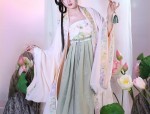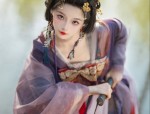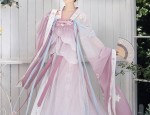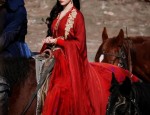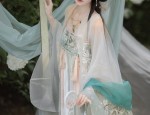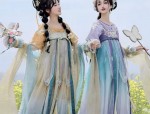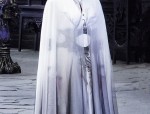The Mamen Dress:The Evolution of Horseface Skirt in Traditional Chinese Clothing
In The vast and diverse realm of traditional Chinese fashion, the Mamen dress stands out as a unique and fascinating example of cultural heritage. Mamen, commonly known as the horseface skirt, is a distinctive type of汉服 (Hanfu, or traditional Chinese clothing) that has a rich history and symbolism.
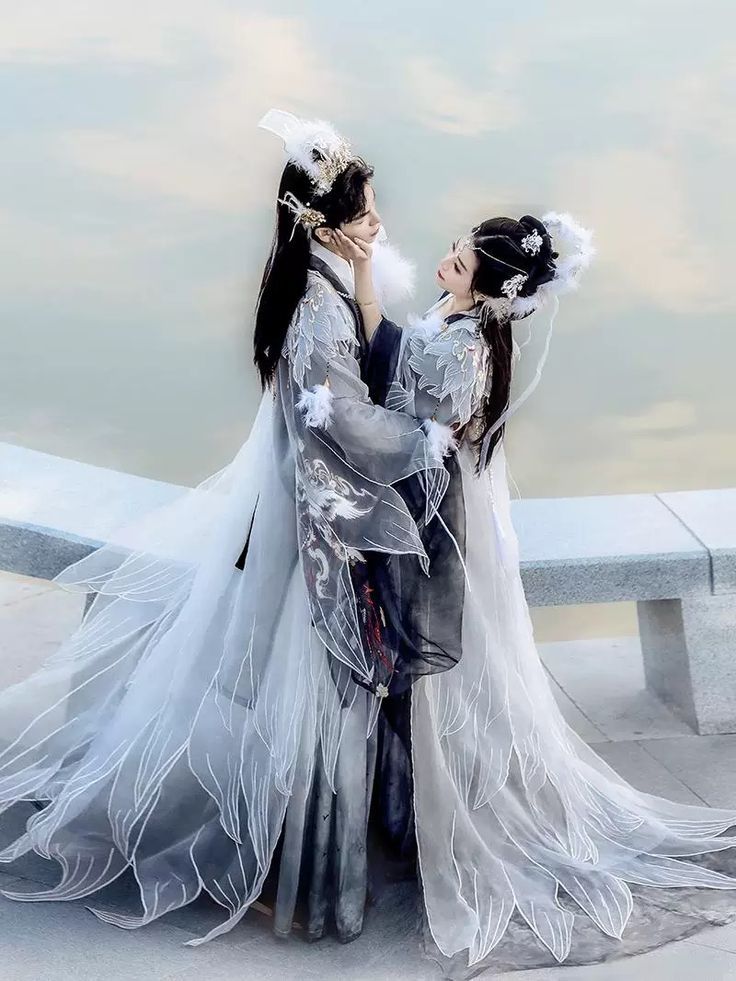
Originating from ancient times, the Mamen dress can be traced back to the Zhou dynasty, when it was initially worn by women as a form of everyday wear. Over centuries, it underwent various transformations and adaptations to reflect the changing fashion trends and cultural norms. The Mamen skirt, in particular, is characterized by its unique design element - the horseface panel at the center of the skirt, which not only adds to its aesthetic value but also holds deep cultural significance.
The Mamen skirt is typically made of silk or other fine materials, and is characterized by its rich embroidery and intricate designs. The horseface panel, as the focal point of the skirt, often features patterns and symbols that are deeply rooted in Chinese culture and mythology. These designs often include auspicious symbols such as flowers, birds, and clouds, which are believed to bring good luck and prosperity to the wearer.
The evolution of the Mamen dress is closely linked to the historical and cultural development of China. During the Ming and Qing dynasties, the Mamen dress underwent significant changes in design and became more elaborate in terms of its patterns and embroidery. It became a symbol of status and wealth, worn by women of high society as a mark of their status and elegance.
In modern times, the Mamen dress has experienced a revival, becoming a popular choice among enthusiasts of traditional Chinese fashion. It is often worn during festivals and special occasions as a way to honor and preserve cultural heritage. The Mamen skirt, in particular, has also been adapted to modern designs, incorporating elements of modern fashion to create a fusion of traditional and contemporary styles.
The significance of the Mamen dress goes beyond its aesthetic value. It is a symbol of Chinese culture and tradition, reflecting the rich history and diversity of Chinese fashion. It is a testament to the creativity and craftsmanship of Chinese people, who have perfected the art of making traditional clothing over centuries. The Mamen dress also serves as a reminder of the importance of preserving cultural heritage and promoting cultural diversity.
In conclusion, the Mamen dress is not just a piece of clothing; it is a symbol of Chinese culture and tradition. Its evolution over centuries reflects the changing fashion trends and cultural norms of China. The Mamen skirt, with its unique design element of the horseface panel, adds to its aesthetic value and cultural significance. Today, the Mamen dress has experienced a revival and continues to be worn by people who appreciate traditional Chinese fashion, while also being adapted to modern designs to create a fusion of traditional and contemporary styles. The Mamen dress serves as a reminder of the importance of preserving cultural heritage and promoting cultural diversity, making it a valuable part of China's rich cultural history.

 Previous Post
Previous Post

